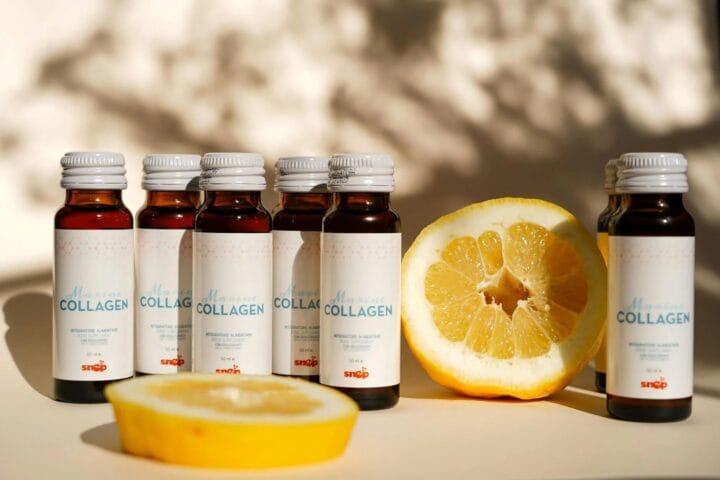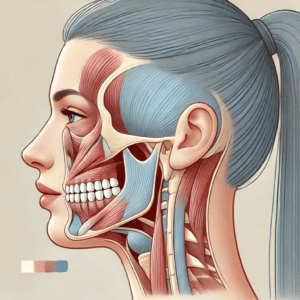What Does Red Light Therapy Actually Do? The Science Behind the Glow
Table of Contents

What Does Red Light Therapy Actually Do? The Science Behind the Glow
Introduction
What does red light therapy actually do to your skin and body? If you’ve ever wondered why beauty influencers, dermatologists, and even athletes swear by this glowing red light, you’re not alone. The buzz isn’t just marketing fluff—red light therapy (RLT) has real biological effects that make it a powerful tool in skincare, pain relief, and overall wellness.
Red light therapy works by delivering low-level wavelengths of red light deep into the skin, targeting the mitochondria (the energy-producing powerhouse of your cells). But how exactly does this translate to firmer skin, reduced inflammation, and even faster muscle recovery? In this post, we’ll break down its benefits, how it works, and what science has to say about its effectiveness.
How Does Red Light Therapy Work on a Cellular Level?
The secret to red light therapy lies in its interaction with the mitochondria—the part of cells responsible for producing ATP (adenosine triphosphate), the energy currency of your body. When red light penetrates the skin, it stimulates mitochondria, leading to:
- Increased ATP production: More cellular energy means better repair and regeneration.
- Enhanced collagen synthesis: Collagen production is boosted, leading to firmer, smoother skin.
- Improved circulation: Increased blood flow nourishes tissues and speeds up healing.
The Science Behind Wavelengths
Red light therapy typically uses light wavelengths ranging from 600 nm to 700 nm. This specific range allows light to penetrate deep into tissues without causing damage, making it ideal for:
- Reversing signs of aging
- Healing wounds and scars
- Reducing inflammation
What Are the Main Benefits of Red Light Therapy?
1. Anti-Aging: Wrinkle Reduction and Skin Firming
One of the primary reasons dermatologists recommend red light therapy is its role in fighting the signs of aging. By stimulating collagen and elastin production, red light therapy helps reduce the appearance of:
- Fine lines and wrinkles
- Sagging skin
- Age spots and pigmentation
Clinical Backing:
A study in the Journal of Investigative Dermatology found that consistent red light exposure over 12 weeks led to significant improvement in skin elasticity and texture.
2. Acne Reduction and Skin Healing
Red light therapy is particularly effective at reducing inflammation, a key factor in acne formation. By calming inflamed sebaceous glands and accelerating wound healing, it helps:
- Reduce the severity of active acne
- Fade acne scars over time
- Minimize redness and swelling
Many dermatologists combine red light with blue light therapy for comprehensive acne treatment, as blue light targets acne-causing bacteria while red light reduces inflammation and repairs tissue.
3. Improved Muscle Recovery and Pain Relief
Athletes frequently use red light therapy to speed up muscle recovery and alleviate joint pain. The therapy enhances blood flow, which delivers oxygen and nutrients to muscles, aiding in faster repair.
- Reduces delayed onset muscle soreness (DOMS)
- Relieves arthritis and joint pain
- Promotes tissue regeneration post-injury
Pro Tip: Many gyms and sports therapy clinics offer full-body red light therapy sessions to support performance and recovery.
What Skin Conditions Can Red Light Therapy Help Treat?
Dermatologists have successfully used RLT to address several skin concerns, including:
- Eczema and psoriasis: Its anti-inflammatory effects reduce itching and irritation.
- Rosacea: Reduces facial redness and calms flare-ups.
- Scars and stretch marks: Stimulates new cell growth to improve texture and tone.
Real-Life Example:
A 2020 clinical study found that patients with psoriasis who underwent red light therapy twice a week experienced a 60% reduction in symptoms within three months.
Is Red Light Therapy Safe for Long-Term Use?
Yes! One of the biggest advantages of red light therapy is its safety profile. Unlike UV rays, which can damage skin, red light therapy does not pose risks of burns or long-term harm when used properly.
Minimal Side Effects
- Mild warmth or tingling during treatment
- Temporary skin redness, which usually subsides quickly
Safety Precautions
- Wear protective eyewear to shield your eyes from prolonged exposure.
- Avoid overexposure, especially with high-powered devices. Stick to recommended session times.
How Long Does It Take to See Results with Red Light Therapy?
The timeline for results depends on your treatment goals:
- Anti-aging and collagen production: Improvements in firmness and elasticity typically appear after 6-8 weeks of consistent use.
- Acne and inflammation: Reductions in redness and breakouts can occur within 2-4 weeks.
- Muscle recovery: Athletes may notice reduced soreness within 24-48 hours of a session.
Consistency is key—most dermatologists recommend 2-3 sessions per week for optimal results.
At-Home Devices vs. Professional Red Light Therapy
Red light therapy is available at dermatologist clinics, med spas, and through at-home devices. But how do they compare in terms of effectiveness?
Professional Treatments:
- Higher intensity
- Faster results (due to stronger light output)
- Suitable for severe skin conditions
At-Home Devices:
- Convenient and cost-effective
- Ideal for maintenance and long-term use
- Best for mild to moderate skin concerns
Top Dermatologist-Recommended At-Home Devices:
- Joovv Solo 3.0 — Ideal for full-body treatments.
- Dr. Dennis Gross FaceWare Pro — Dual light for anti-aging and acne.
- CurrentBody Skin LED Mask — Clinically tested to reduce wrinkles.
Conclusion
So, what does red light therapy actually do? It rejuvenates the skin, reduces inflammation, and accelerates healing by stimulating cellular processes. Whether you’re looking to fade fine lines, reduce acne, or speed up muscle recovery, red light therapy offers scientifically backed benefits that make it worth considering.
As always, consult with a dermatologist to determine if RLT is the right fit for your skin and lifestyle. With consistency and proper usage, you can unlock glowing, healthier skin that lasts.
FAQs
1. Is red light therapy the same as laser treatment?
No, red light therapy uses low-level wavelengths that are non-invasive, while laser treatments involve concentrated beams for deeper skin resurfacing.
2. Can I use red light therapy every day?
It’s generally safe to use RLT 2-3 times a week. Overuse could lead to temporary skin sensitivity, so follow device guidelines.
3. Does red light therapy work for hair growth?
Yes, some studies suggest that red light therapy can stimulate hair growth by improving scalp circulation and cellular repair.
4. Can red light therapy replace my skincare routine?
No, it’s a complementary treatment. For best results, combine it with a consistent skincare regimen including sunscreen, moisturizers, and serums.
5. Is red light therapy worth the cost?
Many users report significant improvements in skin texture and inflammation, making it a valuable long-term investment for skin health.













Post Comment